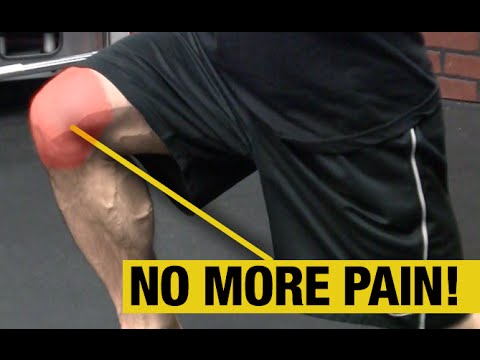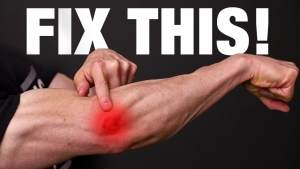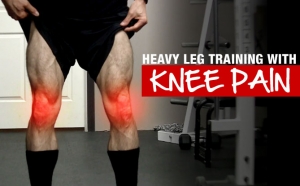
KNEE PAIN WHEN LUNGING?
So, you start your leg workout with lunges and POW! Sharp, digging knee pain. What now?
Quit the exercise? Skip the entire workout? Or power through and suffer later?
The longer you continue to do what’s causing your pain, the more long-term damage you’re going to do. The problem–and the solution–has to do with the types of lunges you select.
You see, forward and reverse lunges could not be more different when it comes to knee pain.
In fact, if lunging forward is your typical way of performing the lunge exercise, you could be causing yourself a knee injury.
Let’s take a look at why that is and see why reverse lunging is the ideal solution to this problem.
THE PROBLEM WITH FORWARD LUNGING
The forward lunge is particularly harsh on the knee for a couple of reasons.
First, the front leg is in an open chain position and absorbs a lot of force the moment your foot hits the ground.
An open chain exercise is one in which the working limb is not in contact with the ground or a similar stable surface. A closed chain exercise is one where the working limb is in contact with the floor or other fixed object.


Second, the muscles of the quadriceps are stretched when the knee is already partially flexed. In this stretched, eccentrically loaded position, the landing force goes directly into an already stinging patella tendon and feels like a knife digging into your knee with every rep. Not a good situation.
Those are the reasons why forward lunges may actually be contributing to the pain, whereas a reverse lunge may let you finish your leg workout and fix your knee pain in the process.


BENEFITS Of REVERSE LUNGES
There are three good reasons why the reverse lunge (also called a Step-Back Lunge) is so much better when you have knee pain.
Let’s have a quick look at what makes the reverse lunge a much better choice.
1) Closed Chain. In a reverse lunge, the knee on the working leg is supported from the very beginning of the exercise. The front leg starts and stays in a closed chain position, in contact with the ground, so the stability of the front leg and knee joint is enhanced.
2) Hip Position. The muscles of the working hip flex more with a reverse lunge as you step back than during a standard forward lunge, relieving some of the pressure going through the patellar tendon. That’s because one of the four quad muscles–the rectus femoris–crosses the hip joint. It relaxes a bit due to the angle, generating less force across the knee.
3) Direction of Force. The force from a reverse lunge gets directed in a more vertical and backward angle which helps to load the hip and the quad better. By taking a step down and back, you’re sending the force more through the quads and less through the knee joint.
For you guys who have a hard time feeling the lunge in the quads, the reverse lunge is probably going to be an overall better option anyway.


You don’t have to stop lunging altogether if you get knee pain when doing lunges. Just alter the direction in which you’re lunging. Modifications like these make the difference between training and just working out.
Training like an athlete using a scientific approach like ATHLEAN-X means training better, safer, and getting faster results by training your body the way it’s designed.
See which of our ATHLEAN-X programs best fit your goals and equipment!

- Knee pain is one of the most common issues people have when doing lunges.
- The direction of the lunge makes a difference. Forward and reverse lunges work on the knee and hip differently.
- Forward lunges are “open chain”, where the foot is not in contact with the floor. When the foot lands, ground forces travel up through the knee, causing pain.
- Reverse lunges are “closed chain”. The foot stays in contact with the ground so there’s no impact force.
- Reverse lunges have the added benefits of reduced tension on the quads due to the rectus femoris being in a somewhat relaxed position.
- The reverse lunge may be the better of the two lunge varieties for overall leg development, especially if you’re not getting benefit from forward lunges.

Jeff Cavaliere M.S.P.T, CSCS
Jeff Cavaliere is a Physical Therapist, Strength Coach and creator of the ATHLEAN-X Training Programs and ATHLEAN-Rx Supplements. He has a Masters in Physical Therapy (MSPT) and has worked as Head Physical Therapist for the New York Mets, as well as training many elite professional athletes in Major League Baseball, NFL, MMA and professional wrestling. His programs produce “next level” achievements in muscle size, strength and performance for professional athletes and anyone looking to build a muscular athletic physique.

































